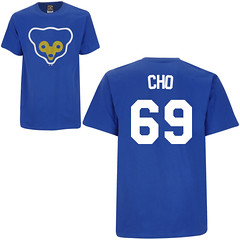I share oodles of information and debate philosophies with many sharp players on a continuous basis. Such locking of horns is imperative to knowledge progression. Said argumentations are to handicapping advisers what scholarly journals are to academia.
One of the most heated deliberations among the sharpest of the sharks is how to weigh a pitcher’s ERA relative to his WHIP.
I realize most baseball fans know what an ERA is, but many are not as versed on WHIP. It’s walks+hits/innings pitched. As much as I savor involving myself in debate with other masters of the trade, inevitably I am the one screaming the remedy is both.
I tell them it’s the equivalent of asking a doctor whether one should diet or exercise. Sure conquering one or the other is better than neither, but any reputable physician advises they are not mutually exclusive.
A true handicapping scientist knows that careful interpretation of both ERA and WHIP neutralizes the inherent flaws of both while reinforcing the stronghold of each numerator.
Here is a pro-WHIP argument I often hear and articulated on rec.gambling. sports newsgroup by one of the participants:
The ERA can be affected by good fortunate (luck) far more than WHIP. The walks and hits a pitcher gives up show his skills facing a batter and will rise as he continues to allow hits and walks as it should.
But the same poor pitching, which allowed the walks and hits onboard, isn’t necessarily reflected in his ERA stat. He may escape lucky. His ERA can be affected either direction by the help he gets from his mates and/or the wind and/or the size of the ballpark.
This is particularly important in the first handful of starts of the early season, where averages can be easily skewed by a few innings.
A pitcher allowing a 400′ shot to center for example when a breeze is blowing in or the fielder makes a circus catch over the wall escapes with no runs scored, saving his ERA.
But in a different park the same 400′ shot to center is a homerun, or the wind blows it in the gap for a double to score a couple and his ERA goes up!
So one fortunate guy gets a low ERA and the less fortunate guy, who allowed the SAME number of hits and walks, maybe even LESS, his ERA goes UP!
Meanwhile, the WHIP stat is not affected unfairly in that way, and as such I feel it more indicative of the pitcher’s skill.
I agree with many of the points raised but the dissertation was a bit one-sided review of the pros and cons.
WHIP can be very imperfect as well. It does not measure a pitcher’s ability to pitch out of tough situations or whether or not he gives up a disproportionate number of singles and walks relative to the pitcher who has a propensity to give up the long ball.
Pitchers who can get the ground ball double play when they need it or have the ability to bear down with runners in scoring position will generally do better in the ERA category than WHIP.
Plus in a discussion with some of the top baseball predictors on the planet, one of the elite of the elite reminded us that the team that scores more runs wins 100 percent of the time. The team that gets the most walks plus hits often loses. As devil’s advocate, I added the team that gets the most runs is not always the team that allowed the fewer earned runs.
Hence, I must be adamant as an inescapable stipulation that because baseball’s definition of “earned run” is not without glitch, especially from a handicapping standpoint, an old hand also must pay heed to unearned runs. After all, there are no such things as an “unearned” hit or walk in the WHIP stat.
However seeing some of the top handicapping geniuses get in heated dispute of the pros and cons of each statistic only reinforced what I believed all along the few wizards out there never, ever ignore one math unit at the expense of the other.
As a sports doctor the only baseball picks that I give my patients will be from the knowledge that a steady diet of winners involves exercising both ERA and WHIP.
Find tips about dwarf orange tree and elder tree at the Types Of Trees website.
Article from articlesbase.com

